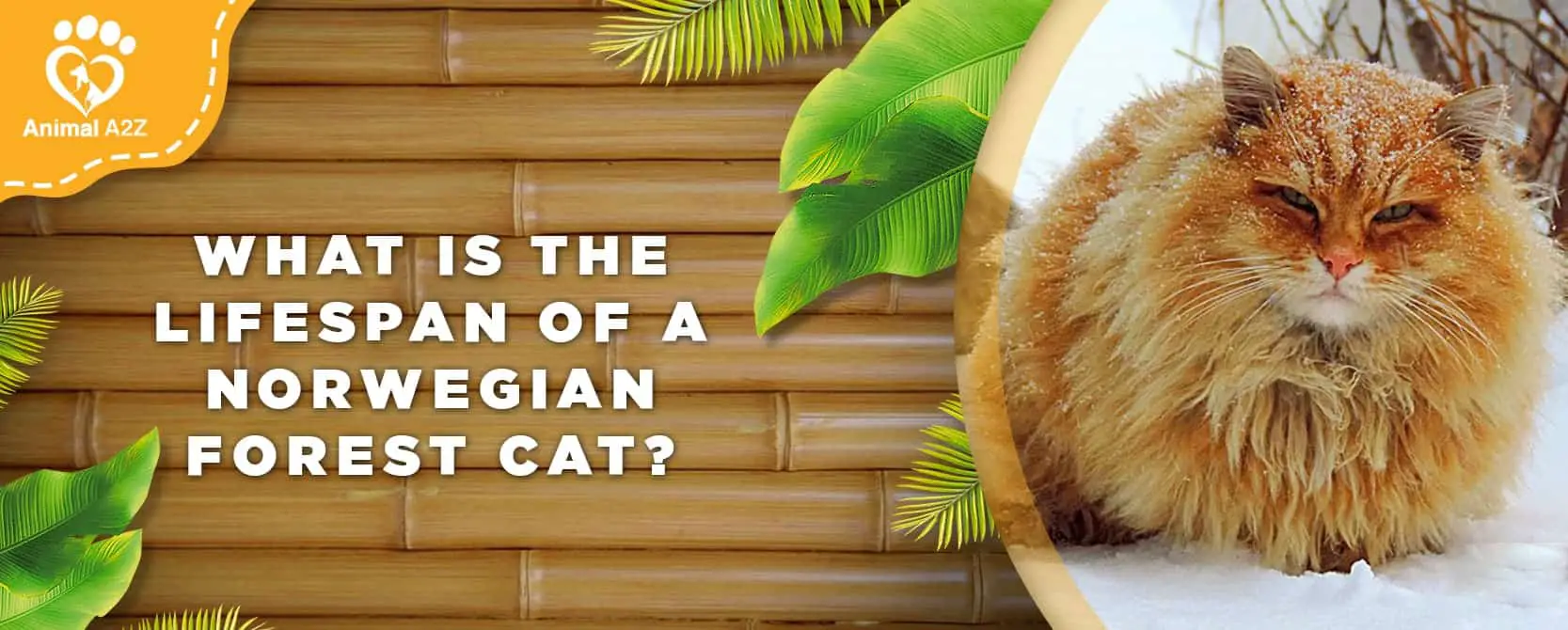As cats are small creatures, they often live longer than dogs and can even reach up to twenty years old. The Norwegian Forest cat may be a larger breed of cat, but they can live for a long time, with an average age of fifteen years old.
The Norwegian Forest cat is a charismatic and friendly breed. They enjoy human companionship and are extremely intelligent. They are noticeable by their long-haired coat, their bushy tail and their almond shaped eyes.
In this article we’ll discuss how long they live for, what health conditions they might have, and how you can help to prolong their life.
Table of Contents
How long do they live for?
The Norwegian Forest cat is known as a ‘natural’ cat breed. This is because they have evolved naturally over time, as opposed to being bred by humans. As they are a natural breed, the Norwegian Forest cat tends to have fewer health problems and can live longer.
On average, this breed will live for 14 to 15 years, but some cats have been known to live until they are 20. A fun fact is that they don’t fully mature until they are 5 years old, meaning that they retain their kitten-like nature for longer than most cats.
How long your Norwegian Forest cat lives for depends on a number of factors. These will include the kind of diet they are on, what environment they live in and what the quality of their life is. Genetics can also play a role, which is why it’s important to know about the health of the cat parents.
The right food is important: Good cat food for Norwegian Forest Cats
Do Norwegian Forest cats have health conditions?
As mentioned before, the Norwegian Forest cat is a more natural breed. This means they aren’t susceptible to some of the hereditary health conditions that other cats suffer from. On average, they live healthy lives and don’t often have problems.
However, there are a few health issues that the Norwegian Forest cat might be plagued with more than others, including:
- Eye conditions: NFCs can sometimes suffer from problems related to light sensitivity in the retina, caused by inflammation or high blood pressure. Other conditions they could suffer from include conjunctivitis, cataracts and glaucoma.
- Kidney disease: while kidney problems can occur because of age, they can also be caused by infections and toxins getting into the body. Norwegian Forest cats are prone to a condition where cysts form in the organ and cause problems with kidney function.
- Heart disease: if a cat is born with a heart disease it is called congenital and if they get it later on in life, it is an acquired heart disease. The Norwegian Forest cat can suffer from hypertrophic cardiomyopathy which could lead to heart failure if not treated.
- Orthopaedic problems: larger animals and cats can suffer from bone, joint or ligament diseases. NFCs in particular might suffer from hip dysplasia. This is when the ball and socket in the hip joint don’t develop properly. However, this won’t often show until much later in the cat’s life.
- Cystitis: also known as feline urinary tract disease, the Norwegian Forest cat can suffer from this. It is often caused by infections, not urinating enough, or even stress.
In general, the Norwegian Forest cat often has good health and most of the problems on this list can be treated to either ease symptoms or cure the condition completely.
Do Norwegian Forest Cats really like water?
How can I prolong my NFCs life?
There are a number of things you can do as an owner to help prolong the life of your Norwegian Forest Cat. No breed is free from inheriting health conditions, but you can make sure they live a healthy life to limit the chances of them developing problems.
One of the things you should do is to give your cat a healthy and nutritional diet. This will involve giving them food that contains protein and vitamins to keep their bones healthy and strong. Some people even find it beneficial to feed their cats raw food like fish or even cooked meat.
It is also important that you take your cat to the vet for annual or bi-annual check-ups. This will involve getting them booster vaccinations, flea and worming treatments, as well as checking their teeth. Frequent vet visits mean you can catch any problems while they are still small. It also gives you a good idea of how healthy your cat is.
Here are some other things you can do to prolong their lifespan:
- Don’t give them too many treats.
- Always make sure clean water is available for them.
- Treat their hairballs if they often get sick from them.
- Keep your cat indoors and away from busy roads or other cats.
- Get your cat spayed or neutered.
- Provide them with plenty of toys for stimulation and entertainment.
The way to check if your cat is part Norwegian Forest cat.
Frequently asked questions about Norwegian Forest cats
What is their temperament like?
While the Norwegian Forest Cat has wild roots, they are actually a calm and friendly cat breed. They might be shy around new people, but they are very sociable when they trust their owners and they enjoy human companionship.
As they are so gentle and kind, they will get along well with children and even other pets if they are cat friendly. However, the Norwegian Forest cat also knows their limits and will retreat to a safe space, preferably up high, when they need time alone.
How do I groom them?
As the Norwegian Forest Cat has a long-haired coat, they will need grooming at least once a week. When they are shedding their winter coat, you might need to brush them more often to help get rid of the fur.
When grooming them, be sure to use a wire bristle brush and comb on their tummy, back, sides, chest and tail.
Norwegian Forest cats often live long and happy lives
When looked after and cared for properly, the Norwegian Forest cat can live a long and happy life. Make sure you take them to the vet often for check-ups, feed them nutritional food and have lots of fun playing with them.



